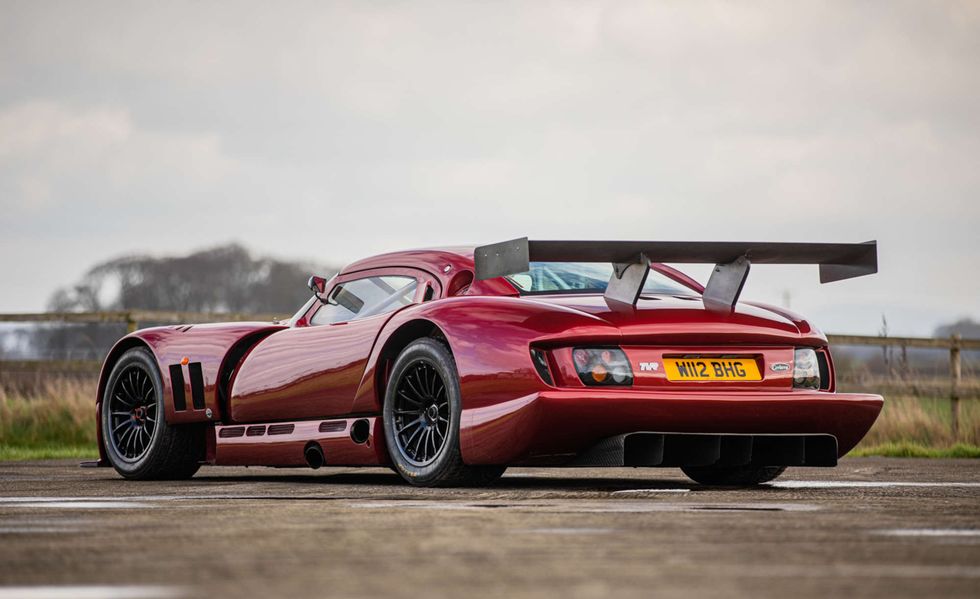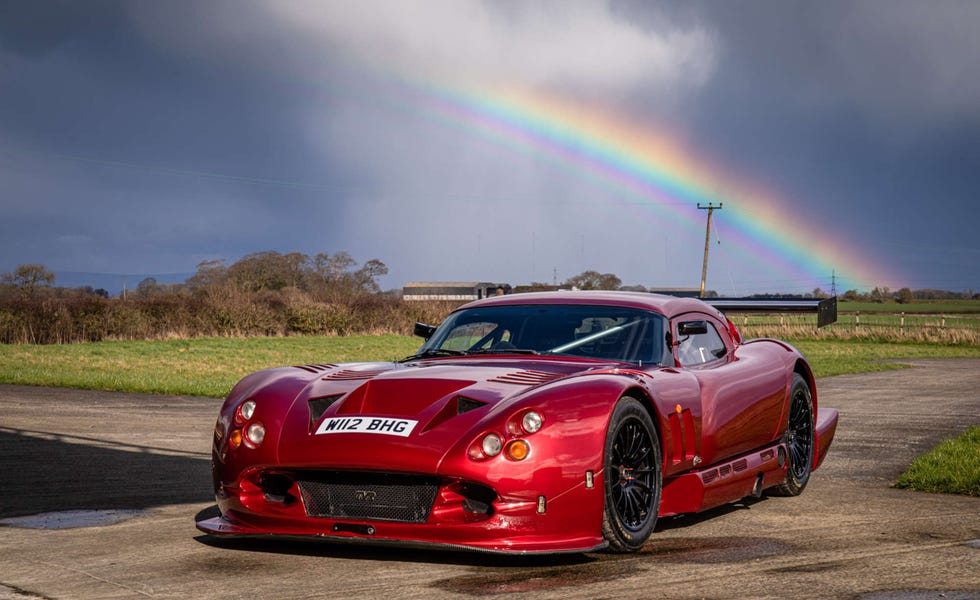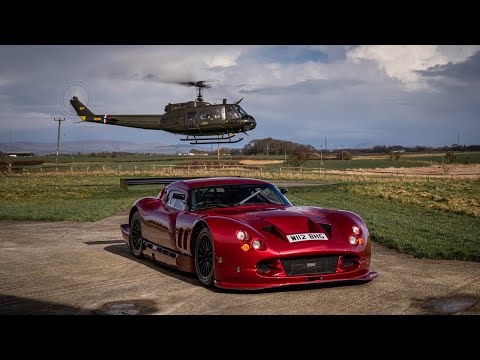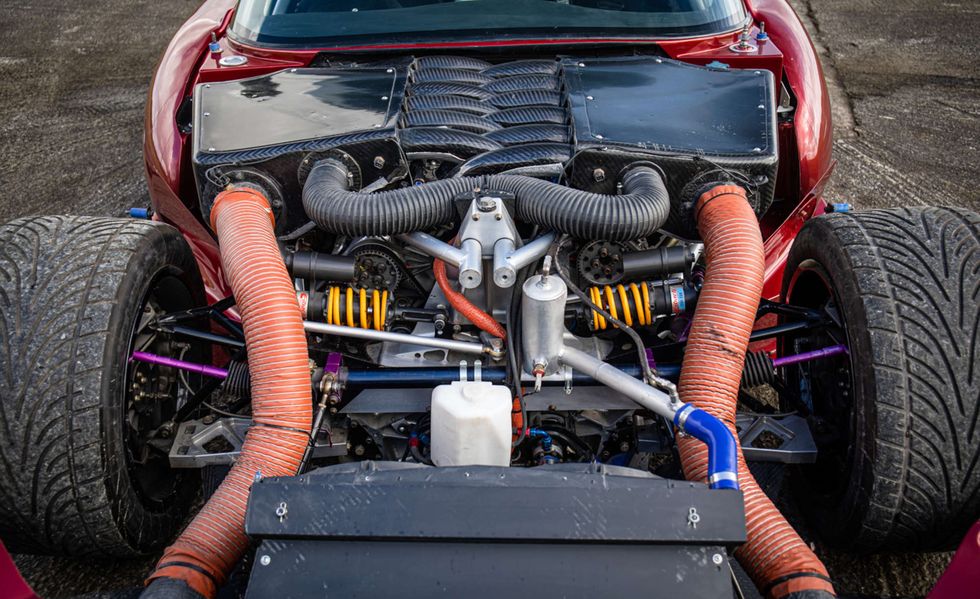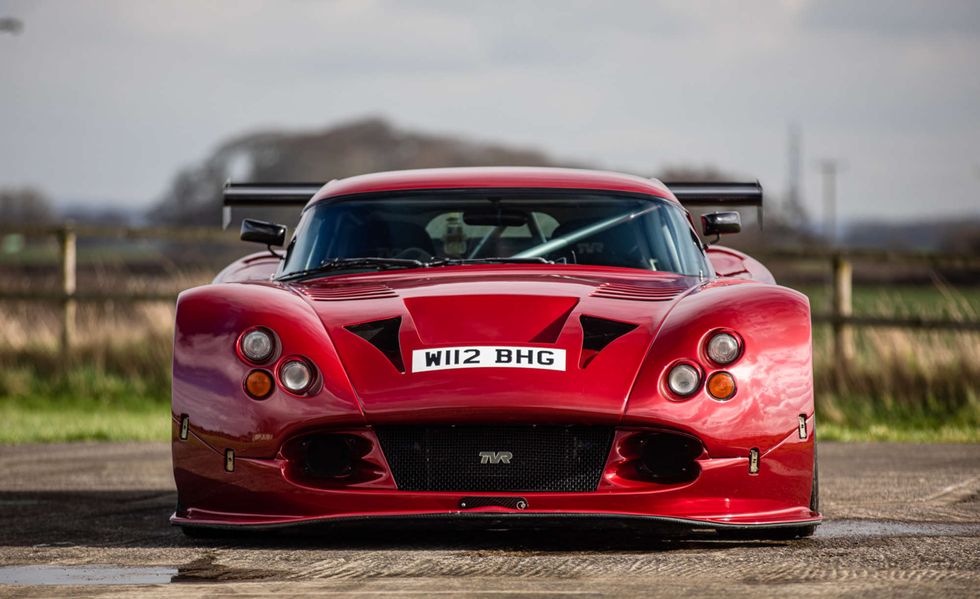- The TVR Cerbera Speed 12 is the wildest TVR ever unleashed on the street.
- Built to compete in the GT1 racing series, this unique road-legal version of the Cerbera has a 7.7-liter V-12 rated at more than 800 hp and weighs less than 2200 pounds.
- This car, the only surviving example, is coming to Silverstone Auctions this May.
The TVR Cerbera, introduced in 1996, was a powerful fiberglass-bodied sports car that could be seen as the UK’s Chevrolet Corvette, or perhaps its Dodge Viper. In stock form, the Cerbera topped 450 horsepower. It also lacked such rudimentary driver aids as traction control or anti-lock brakes. We said the Cerbera is “equal parts terrifying and awe-inspiring.” So what to make of this one that almost doubles its production?
With the Speed 12, TVR built a 7.7-liter V-12 engine from two of its inline-sixes and crammed that engine into a Kevlar and carbon-fiber body that weighed about the same as a First generation Mazda Miata. Dangerous? It’s like playing cricket with hand grenades. But now, this lone survivor Speed 12 can be yours.
Blackpool-based TVR has a reputation for building brutally insane vehicles, but the Speed 12 wasn’t just a bout of madness. Instead, it was built as a potential competitor to the McLaren F1, Porsche 911 GT1 and Mercedes-Benz CLK GTR. Today, these three are some of the most desirable road cars ever built, homologation specials precisely engineered to dominate racing at Le Mans.
This content was imported from YouTube. You may be able to find the same content in another format, or you can find more information on their website.
TVR’s interpretation of the GT1 class was less a racing scalpel and more a table with a nail sticking out. There were some initial problems getting this English-bred mad dog into production. First, the FIA took a look at the Speed 12’s monstrous engine and fitted it with a pair of intake restrictors, reducing output to 675 horsepower. Porsche and Mercedes-Benz had huge R&D budgets alongside the little TVR, and in this case, the German Goliaths trampled David in jello. The Speed 12 won a few races in Britain but never competed at Le Mans as intended.
No problem, said TVR. If we can’t build the world’s fastest race car, let’s build the world’s deadliest road car. Its engineers strapped an unrestricted version of the 7.7-liter V-12 to the test bench, and the bench quickly exploded. Finally, it was confirmed that the power was between 800 hp.
TVR was then run by Peter Wheeler, a chemical engineer who made his fortune in the UK’s North Sea oil boom. Wheeler was something of a larger-than-life character: in one instance, his dog attacked the Chimera’s prototype bodywork and liked the resulting holes so much that it got them the production car. He was imposing in person and capable behind the wheel. But the Speed 12 was too much even for him.
Returning from a prototype drive, Wheeler declared the Cerbera Speed 12 too outrageously wild for the road, and the production car program was scrapped. The road cars were sourced for parts for the limited runs that the Speed 12 did, and that was it. However, one prototype survived and in 2003, TVR put this lone example up for sale. Wheeler personally examined the buyer.
Now the Cerbera Speed 12 is for sale at Silverstone Auctions, ready for a new owner. If you’re the kind of person who just read a bit about the design of a car based on a body-attacking dog and thought, “That sounds good and normal,” this is the car for you. Massively powerful, dangerously fast and a complete handful, the Speed 12 is essentially the most TVR of all TVRs. It can be yours, if you dare.
Collaborating editor
Brendan McAleer is a freelance writer and photographer based in North Vancouver, BC, Canada. He grew up splitting his knuckles on British cars, came of age in the golden age of Japanese compact sports performance, and began writing about cars and people in 2008. His particular interest is the intersection between humanity and machinery, whether it’s racing. Walter Cronkite’s career or Japanese animator Hayao Miyazaki’s half-century obsession with the Citroën 2CV. He’s taught his two young daughters how to shift a manual transmission and is grateful for the excuse they provide to perpetually buy Hot Wheels.



